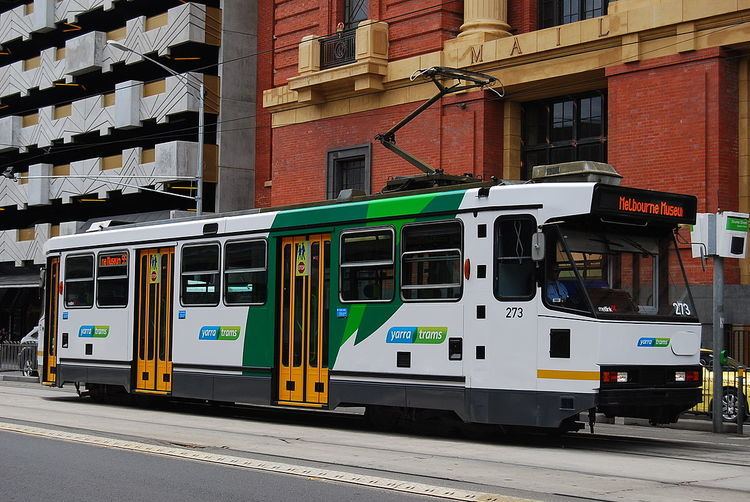Manufacturer Comeng Constructed 1983–1987 Fleet numbers 231-300 | Assembly Dandenong Number in service 69 | |
 | ||
Capacity 40 (Seated)65 (Standing) | ||
The A-class are single-unit bogie trams, (officially known as light rail vehicles as classified on the Yarra Trams website), that operate on the Melbourne tram network. Seventy were built by Comeng, Dandenong between 1984 and 1987 in two batches, 28 A1s and 42 A2s, with only minor differences. They are the smallest trams by capacity currently operating on the network.
Contents
History
Comeng had expected an extension to the Z-class order, and in the early 1980s drew up plans for a Z4-class, due to a change in state government in 1982 these plans were put on hold. The order eventuated however in late 1982, as an order for 28 A-class trams. The design, which was shaped by input from passengers and tramways employees, had a series of alterations from the Z-class design. They did not include the conductors console seen in the Z-class, and had a differing door arrangement that posed a design challenge, as there was less space to house equipment.
This order was extended in 1985 for 42 more, and were designated A2-class due to a number of design changes. All 70 A-class trams were built in Comeng's Dandenong factory, with 69 remaining in service today. By August 2007 all had been fitted with LED digital signage, replacing traditional roller blinds.
As of 2017, on board real time destination information screens and announcements are being rolled out onto the A Class trams.
A1-class
In late 1982 the state government approved an extension to the Z class order, the result being 28 A1-class which were built in 1983 and 1985. They were substantially based upon the Z-class design, with improved ventilation, and differing door positions. They had the same equipment as the Z3-class trams, AEG controls and Duewag bogies. However, placing all the Z3-class equipment under the frame posed a problem due to the differing door arrangement, as there were two step-wells where previously there was one, reducing the available space. Due to a desire to be less pointy and possess a flatter front, they were made shorter with less overhang, giving them a different appearance to the Z-class trams. The first A-class was delivered on 12 December 1983 and entered service on 13 June 1984.
Prior to pantograph modification, all were originally built with trolley poles.
As of August 2014, 27 remained in service, one (A1 231) was withdrawn after being damaged by fire in June 2013.
A2-class
Following an extension to the A-class order, 42 A2-class were built between 1985 and 1987. They were very similar to the A1 class, however they differ in being fitted with superior Hanning & Kahl brakes, a more reliable door mechanism, and were also the first Melbourne trams to utilise the current pantograph.
Use
A-class trams operate on the following 11 routes:
A-class trams operated on the following routes prior to their abolition:
